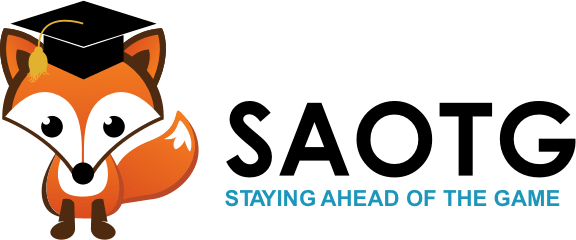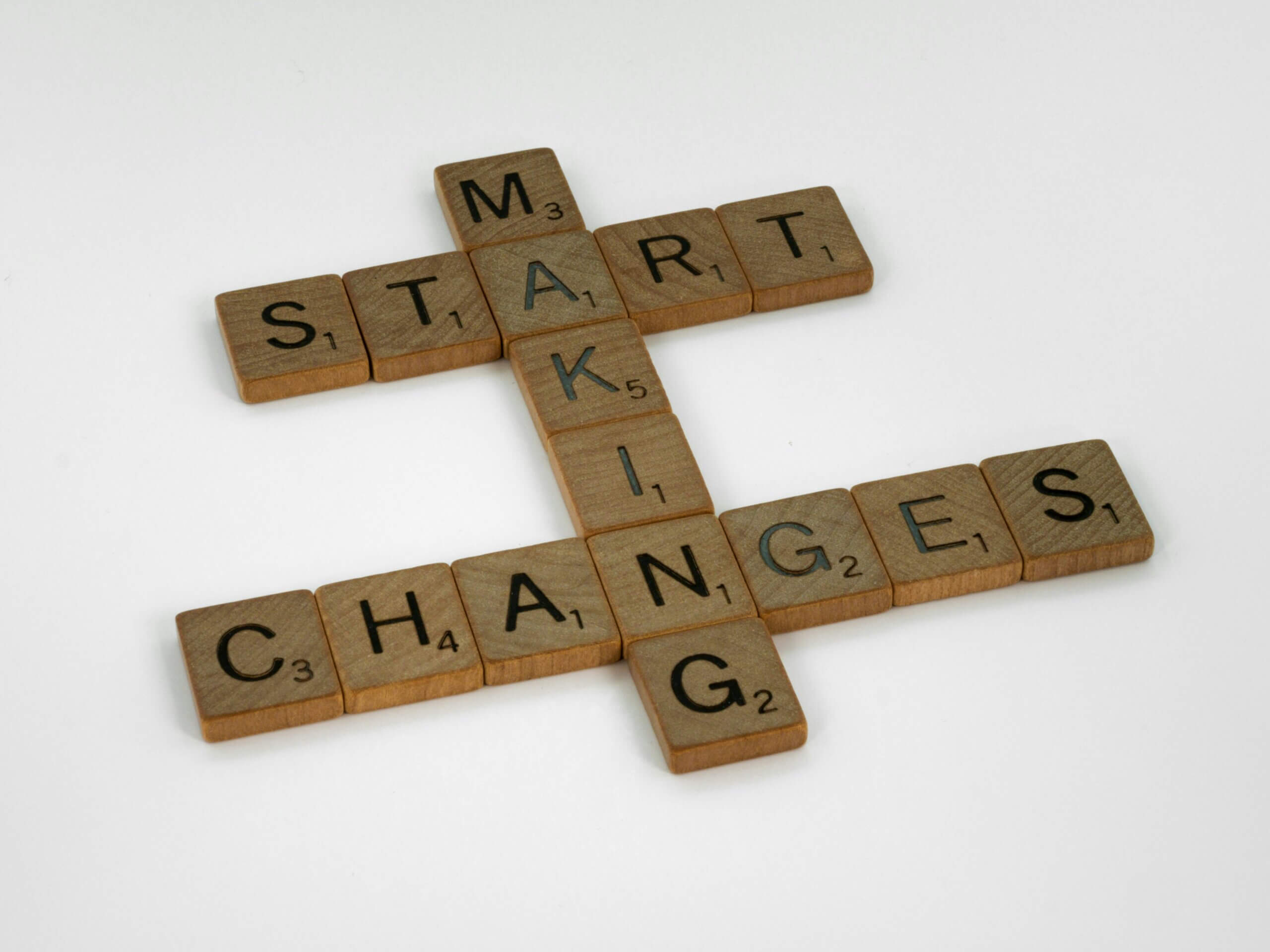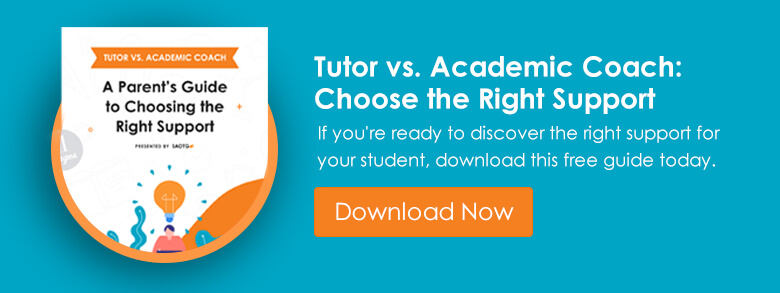Introduction to SAOTG’s In-Depth Procrastination Guide
Procrastination and its progeny are significant barriers to student success. This guide arms parents, teachers, and support professionals with an arsenal of knowledge and strategies to tackle procrastination, decision fatigue, and the instant gratification trap. It unravels the complex web of procrastination’s causes, highlighting how executive functioning skills play a crucial role in students’ ability to manage time, focus attention, and initiate tasks.
This in-depth guide also serves as a roadmap to SAOTG’s other resources. We want to ensure that readers have access to a comprehensive toolkit for supporting students through the SAOTG website. The sections below are riddled with links to additional resources and blog posts, offering readers a holistic view of each subtopic within the broader framework of procrastination and Executive Function (EF). Whether the discussion veers towards e-binders, attention residue, or prioritization, these links serve as gateways to further discovery.
As always, our goal is to not only illuminate the path through the immediate challenges but also to lay the groundwork for lifelong skills and habits that foster resilience, productivity, and fulfillment. Enjoy!
Understanding the EF Roots of Procrastination
Procrastination is complex. There are three interrelated topics at issue: the emotional allure of procrastination itself, the cognitive toll of decision fatigue, and the struggle with delayed gratification. Each of these concepts relates to our tendency to postpone tasks. The sections below explain not only why we procrastinate but also how we can confront and mitigate its effects.
Procrastination
At its core, procrastination is the decision to delay tasks despite knowing the negative consequences that will follow. This widespread habit, though often observed in academic settings, affects individuals of all ages. It leads to stress, anxiety, and a pervasive sense of dread. It kills momentum and spreads like a virus, affecting not just the task at hand but other academic and non-academic areas.
The roots of procrastination may lie in a fundamental desire to avoid discomfort, whether it be fear of failure, boredom, or the inherent unpleasantness of certain tasks. Research suggests that this behavior could stem from a biological impulse, with studies pointing to a larger amygdala in chronic procrastinators. This part of the brain, responsible for processing fear and emotions, might overreact to the perceived threat of a challenging task, triggering what is known as an “amygdala hijack.” This reaction prioritizes immediate emotional relief over long-term goals; it dampens EF functions like prioritization and sequential thinking in favor of simple, often detrimental reactionism.
Addressing procrastination, therefore, requires more than just a stern admonition to “stop procrastinating.” Effective intervention involves understanding and managing the emotions associated with daunting tasks, breaking the cycle of avoidance by finding more rewarding approaches to task completion. To avoid procrastination, we need to manage emotions related to a task. If a cycle of procrastination is already at play, the brain receives temporary rewards for putting tasks off. A new, more rewarding method can disrupt the pattern.
Decision Fatigue
The concept of decision fatigue provides another lens through which to view procrastination. Every day, individuals, including students, face a barrage of decisions. From the momentous to the mundane, these choices deplete our mental energy, leaving us exhausted and less capable of making beneficial decisions. Decision fatigue is this cognitive drain stemming from the incessant need to make choices, big or small, throughout the day. It’s the overwhelming sensation experienced when faced with too many decisions, leading to a depletion of mental energy and a decline in the quality of choices made.
This fatigue is especially palpable in the educational settings, where students are continually pressed to prioritize tasks, manage distractions, and navigate numerous academic and personal responsibilities. The constant activation of the brain’s EF system, required for these activities, demands significant effort and energy. Unsurprisingly, students, particularly those grappling with ADHD, find themselves trapped in a cycle of avoidance, procrastination, or impulsivity as a coping mechanism caused by decision overload.
The phenomenon directly correlates to the EF skills of planning and prioritization —crucial abilities that allow students to create a mental roadmap to focus on tasks or goals. Decision fatigue clouds this roadmap, making it exceedingly difficult for students to discern what to do next. This uncertainty, coupled with the pressure to make the right choices, can lead to a paralytic state where students either freeze or seek escape by engaging in unproductive activities.
Beyond the immediate struggle of making effective choices, decision fatigue wreaks havoc on academic performance, willpower, and emotional regulation. The enduring psychological drain it creates impairs students’ abilities to concentrate, complete assignments efficiently, and engage effectively in the learning process. It erodes willpower, leaving students vulnerable to further impulsivity, poor planning, and the lure of immediate gratification.
Delayed Gratification
Delayed gratification introduces an additional perspective on procrastination. In an era, dominated by digital distractions, students encounter constant temptations for instant gratification—ranging from immediate social media notifications to a plethora of entertainment options right at their fingertips. This digital environment stands in stark contrast to the nature of academic work, which typically demands prolonged effort and promises rewards only in the future. The trap of instant gratification along with decision fatigue make procrastination almost inevitable. Thus, any plan to combat procrastination (the broader problem) must involve plans to mitigate decision fatigue and avoid the instant gratification trap.
The well-known “Marshmallow Experiment” vividly illustrates this concept. In this study, children who could not resist eating a marshmallow immediately, foregoing a larger reward later, exemplify how decision fatigue can erode self-control. This example underscores the critical need for strategies aimed at managing this widespread challenge.
And that was just marshmallows. Social media, text messaging, and gaming pack a much larger cognitive punch than a plate of marshmallows. The omnipresence of technology has significantly altered students’ expectations and their willingness to put in effort without instant rewards. This change is especially pronounced among older students, who not only face more complex academic tasks but are also more vulnerable to the temptations of instant gratification.
To address the inclination to procrastinate, driven by the pursuit of instant gratification, it’s vital to cultivate strategies that weigh the short-term pleasures of digital engagement against the long-term advantages of academic commitment. Encouraging students to establish objectives, effectively manage their time, and discover internal motivation in their studies can help diminish the influence of instant gratification, promoting a productive learning and task completion approach.
Combatting This Triple Threat
Recognizing the complex nature of procrastination allows us to devise more efficient strategies to tackle it. Drawing on psychological insights and EF research, we can equip students with the tools they need to navigate procrastination, decision fatigue, and instant gratification.
Helping Students Combat Procrastination
Manage Decision Fatigue
Before we delve deeper into combatting procrastination, we need to discuss how students can deal with decision fatigue. At the heart of counteracting decision fatigue is the implementation of structured habits and routines, which is a cornerstone of SAOTG’s EF academic coaching curriculum.
Routines help automate decision-making processes, thereby conserving mental energy for tasks that require more intensive cognitive engagement. By shifting the cognitive load from the prefrontal cortex—the brain’s decision-making hub—to areas tasked with habitual behavior, we allow for a mental conservation of energy. This shift not only prevents the prefrontal cortex from being overwhelmed by trivial decisions but also reserves its capacity for critical thinking, complex problem-solving tasks, and, perhaps most importantly, focused action.
For instance, consider the routine of preparing for the next school day each evening. Establishing a habit of selecting and setting out clothes, packing the school bag, and organizing study materials for the following day can transform what might be a morning scramble into a smooth, virtually automatic process. This approach to minimizing decision-making in daily routines effectively conserves cognitive energy, thereby reducing stress and promoting a state of mental clarity. In a professional setting, similar routines—like reviewing and setting priorities for the next day’s tasks before leaving work—can significantly alleviate decision fatigue, leading to heightened productivity and mental acuity. Over time, these practices become ingrained, reducing the cognitive drain from active decision-making.
By creating straightforward systems for managing personal and academic responsibilities, such as organizing study schedules or automating the process of tracking assignments, a student’s daily cognitive load is reduced. Through the adoption of these EF-driven habits, students face fewer decisions, enabling them to conserve mental energy for the academic challenges that demand it. Parents can facilitate this transition by assisting their children in identifying everyday decisions that can evolve into routines.
Identify Procrastination Triggers
All action starts with awareness. Understanding the triggers of procrastination is crucial for overcoming it. The most common catalysts for procrastination include feeling overwhelmed, experiencing boredom, facing uncertainty, and succumbing to inertia. By identifying these triggers, we can create strategies to mitigate their effects.
Feeling overwhelmed is a significant trigger. This can happen when tasks appear too large or complex, creating a sense that starting is futile because the end seems unreachable. This feeling may arise from trying to handle too many tasks at once, leading to a sense of being stretched too thin, or from a lack of organization, making even manageable tasks seem daunting. Setting overly ambitious goals without a realistic plan can also lead to overwhelm, fostering a sense of inadequacy and, consequently, procrastination.
Boredom is another key trigger. When tasks lack intellectual stimulation or personal relevance, our attention drifts to more appealing activities. Tasks that feel monotonous or unrelated to our interests prompt avoidance. The rationale is simple: why engage in something uninteresting when more enjoyable options exist? This mindset makes the decision to delay action more appealing than taking action.
Uncertainty about how to proceed can also prompt procrastination. When the steps to complete a task are unclear, the journey to its completion seems foggy. This is particularly true when embarking on new tasks without a clear plan, making the uncertainty paralyzing and distractions more tempting.
Inertia also plays a crucial role in procrastination. The principle that objects at rest tend to remain at rest applies to human behavior as well. Starting an activity requires much more effort if we’ve been in a state of rest, making the transition to productive work feel daunting. It’s often the difficulty in beginning a task, rather than completing it, that fuels procrastination. The initial effort, or activation energy, needed to start is frequently the biggest hurdle.
Harnessing Executive Function to Tackle Procrastination
Our approach to procrastination is systematic. First, we teach students what causes procrastination. This includes recognizing the triggers for procrastination, of course, but it also includes developing a plan for decision fatigue and instant gratification. At SAOTG, we know students can reach their potential by harnessing a structured methodology built around the four pillars of Executive Function: organization, time management, learning skills, and impression management. Here are the EF strategies we employ to combat procrastination:
Leverage Organization to Minimize Procrastination Triggers
One indispensable weapon every student should possess against procrastination is an organized binder. A well-organized binder, both physical and digital, emerges as a crucial tool for students. It serves not just to prevent the chaos of lost assignments and missed deadlines but also to significantly cut down on procrastination by eliminating opportunities for distraction. This strategy addresses the twin demons of procrastination: the sense of being overwhelmed and the paralysis of uncertainty.
When students misplace materials, the ensuing chaos is not just frustrating but can deter them from even starting their work. Consider the time wasted in searching for a misplaced math worksheet or a digital document saved in an obscure folder. These scenarios are fertile grounds for procrastination to take root. However, by employing both physical binders and digital organization systems, students can effectively neutralize these procrastination hotspots. Everything they need becomes readily accessible, smoothing the path to get started on their tasks.
The essence of many procrastination issues lies in the hurdle of beginning a task rather than completing it. Therefore, eliminating the barriers to getting started is paramount. An organized binder, supplemented by a coherent digital filing system, ensures that students have immediate access to their materials. This readiness not only promotes a sense of preparedness but significantly boosts the likelihood of a student initiating work promptly. Through this approach, the dreaded inertia that often accompanies the thought of beginning a task is effectively dismantled, setting students on a more productive and focused path.
Set SMART Goals
Adopting the SMART (Specific, Measurable, Achievable, Relevant, Time-bound) goals framework transforms the battlefield of procrastination into manageable territories. By dissecting larger academic endeavors into smaller, digestible objectives, students not only demystify the path to completion but also embed milestones that celebrate progress. This strategy ingeniously counters procrastination by fostering a series of short-term victories, which, in turn, satiates the craving for immediate satisfaction.
The essence of SMART goals lies in their ability to foster clarity and focus. By setting specific targets, students can precisely define what success looks like. Measurability ensures that progress is not just a feeling but a quantifiable state. Achievability keeps students grounded, ensuring goals are within reach and thereby maintaining motivation. Relevance ties tasks to the bigger picture, enhancing engagement. Lastly, time-bound criteria inject urgency and a deadline-driven focus, which can dramatically reduce the allure of procrastination.
Moreover, this method addresses the procrastinator’s dilemma—the trap of instant gratification—by offering a structured pathway to accomplishment. Each completed goal acts as a stepping stone towards larger achievements, thus creating a momentum that is antithetical to procrastination. In essence, SMART goals not only guide students through their academic journeys but also equip them with a potent strategy to combat the ever-present temptation to delay, ensuring a more disciplined and productive approach to learning and task completion.
Ruthlessly Eliminate Distractions
The battle against distractions is relentless. Social media notifications, endless pings, and the allure of tech gadgets like iPhones and iPads can easily sidetrack even the most dedicated students. These distractions, emblematic of our era, thrive in environments that lack structure and discipline, making procrastination a common fallout.
The solution? Craft a study sanctuary that exudes focus. This means creating a space where everything you need is within arm’s reach, minimizing the need to break concentration. By purging both physical and digital distractions, you not only streamline your workflow but also diminish the pull of boredom and indecision. Consider the impossibility of a textbook vying for attention against an iPhone; it’s a battle lost before it begins. The key is to eliminate the competition. Keeping academic essentials like calculators, pencils, notecards, and chargers nearby ensures that the temptation to rise from your desk becomes a non-issue. Everything from posture to lighting can affect the effectiveness of a study space.
Making a preemptive strike against distractions at the onset of a study session is more effective than battling them as they arise. A study zone, bereft of distractions and equipped with essentials, alongside a phone set to silent and placed out of reach, are potent strategies against procrastination. Recognize the distractions unique to your study environment—be it in the living room, bedroom, or kitchen. Identifying and removing these distractions proactively can dramatically boost productivity. Should concentration prove elusive, a quick audit of the top ten distractions in your vicinity and their subsequent elimination can be enlightening. Remember, the power to shape your environment is squarely in your hands; wield it wisely or be ruled by the chaos of distractions.
Master Time Management Principles
Embracing the principles of time management can significantly mitigate the propensity to procrastinate. The proof is in the planning. In other words, the key to combatting procrastination isn’t willpower; it’s foresight.
We advocate for the use of physical or digital planners over school portals. The distinction is crucial: while portals serve as static repositories of information, planners are dynamic tools that can be tailored to individual needs and learning styles. This personalization enables students to pace their work based on their unique strengths and areas for improvement. For example, a student might require more preparatory time for a math assessment than their peer. Accordingly, a planner allows for such adjustments, promoting a structured approach to studying and assignment completion.
By breaking down intimidating projects into smaller tasks and scheduling them, students experience frequent victories in the form of crossed-off items. This strategy not only fosters a sense of accomplishment but also generates momentum. Inertia’s principle—that an object in motion stays in motion—applies here, with planners acting as engines of perpetual motion. Through this method, daunting assignments become manageable, momentum is harnessed effectively, and the allure of procrastination is diminished.
The Last Step Is Identifying the Next step
Before a student stops for the day, they need to figure out where they are going to start next time. Author Earnest Heminway used this concept—the Hemingway Bridge—to great success. Hemingway always ended his writing sessions mid-sentence. This method effectively reduces the “activation energy” needed to start working, thus making it easier to dive back into the task at hand during the next study session. By proactively picking the starting point for their next work block, students bypass the initial resistance that often accompanies task initiation.
This approach emphasizes the importance of focusing on the process rather than the final product. The daunting nature of a project can overwhelm students, but by narrowing their focus to just the next actionable step, the task becomes less intimidating. Parents, teachers, or coaches can aid in this process by encouraging students to concentrate solely on the immediate action required, fostering a sense of curiosity and engagement with the work.
Curiosity often acts as a catalyst for action, which in turn, can spark motivation. By breaking down tasks into smaller, more manageable steps and maintaining a forward momentum, students can trick themselves into starting, thereby sidestepping procrastination. This method not only helps in overcoming the initial inertia but also in maintaining a steady pace of work, leveraging curiosity to transform procrastination into productivity.
Recognize The Value of Discomfort
Anything worth achieving will have moments of unpleasant emotions attached. Discomfort is unavoidable. Either we experience discomfort when working tirelessly towards our goals, or we experience the psychological discomfort of withholding effort. Understanding and embracing the inherent discomfort in pursuit of goals is essential. However, recognizing this can significantly alter one’s approach to tasks. Often, students may exaggerate the negativity associated with an assignment, leading to procrastination. By helping them reflect on the positive outcomes of completing a task, you can shift their perspective, creating more positive associations with the act of getting things done.
Imagine it’s Thursday evening, and you’re rushing to complete a science project due tomorrow. The frustration of missing out on a significant event because of this last-minute rush prompts a critical question: “How did I end up here?” A look back at the weekend spent in a movie marathon or hours lost to watching and sharing videos reveals a pattern of procrastination—a habit that, while common, is incredibly destructive. Recognizing the value in proactive behavior is the first step towards change. By focusing and committing to being proactive, not only can you avoid such stressful situations, but you also open up the possibility of achieving positive outcomes through disciplined action.
Cultivate Self-Motivation & Self-Compassion
Students must learn to see past the time of failure. Cultivating self-motivation and self-compassion is another pivotal step towards overcoming procrastination. Students must learn to navigate past failures without letting these setbacks dictate their future actions.
Embracing self-compassion fosters growth, creativity, and achievement, turning away from the counterproductive cycle of dwelling on negative emotions. Teachers, parents, and peers profoundly impact students’ self-perception. Demonstrating forgiveness and compassion teaches students to extend the same grace to themselves.
The development of intrinsic motivation is also essential. High school students should be encouraged to cultivate a growth mindset, establish meaningful goals, and find genuine purpose in their academic endeavors. This internal drive can significantly decrease the likelihood of procrastination. However, cultivating this motivation is easier said than done. Guiding students to find their ‘why’, celebrating intermediate successes, and enhancing emotional awareness are excellent starting points.
This comprehensive approach to fostering self-motivation and self-compassion among students is not just about academic success; it’s about instilling a sense of purpose, direction, and resilience. By helping students understand the value of looking beyond immediate setbacks, embracing a positive self-view, and harnessing the power of intrinsic motivation, we lay the groundwork for a lifetime of success. Cultivating these qualities requires patience, persistence, and a supportive environment that encourages students to push beyond their comfort zones and embrace the challenges that come with growth and learning.
Create Accountability Systems
Lastly, implementing accountability systems is an effective strategy for overcoming procrastination, especially when the task at hand is unappealing or daunting. Accountability systems should be personal. That is, each student should figure out ways to figure out what kind of accountability is best. This can include a range of figures from one’s life: parents, friends, siblings, or tutors, each capable of providing the necessary push to start and complete a project. The power of accountability lies in its ability to convert importance into action through shared responsibility.
For instance, younger siblings, often underutilized in this context, can serve as excellent accountability partners. Their knack for persistent reminders and the joy they find in assisting their older siblings create a mutually beneficial dynamic. This not only fosters a supportive environment but also integrates a sense of collective accomplishment.
Accountability, when structured effectively, transcends mere task completion. It lays the foundation for developing self-discipline, enhancing time management, and cultivating a proactive mindset. This approach not only addresses the immediate challenges posed by procrastination but also contributes to building resilient, self-motivated individuals capable of navigating the complexities of academic and personal growth. By engaging with support systems, students learn to externalize motivation initially, gradually internalizing this drive to foster lifelong habits of success and fulfillment.
Our EF-driven program specializes in equipping students with these essential life skills. If your student is struggling with procrastination or any executive functioning skill, our one-on-one academic support system offers a personalized approach to overcoming these barriers. Learn more about our one-on-one coaching and group programs here.
Closing Thoughts
This comprehensive guide is a resource for helping students combat procrastination, including the underlying causes such as decision fatigue and the temptation of instant gratification. It explains how Executive Function plays a pivotal role in mitigating procrastination, offering a nuanced understanding that extends beyond mere time management, highlighting the significance of emotional regulation, goal setting, and organizational skills. Through a series of strategically recommended practices—leveraging binders, setting SMART goals, ruthlessly eliminating distractions, mastering time management principles, and cultivating self-motivation and compassion—this guide equips readers with a robust framework to tackle procrastination head-on.
By presenting a holistic view of procrastination, intertwined with practical strategies and psychological insights, it aims to empower educators, parents, and students to foster a conducive environment for learning and personal development. We are here to help. Whether you are an educator seeking to support students, a parent helping your children, or a student striving to enhance your academic performance—this guide serves as an invaluable resource. Through this in-depth exploration, the guide not only informs but also inspires action, providing a structured approach to not just cope with procrastination but to thrive despite it.





